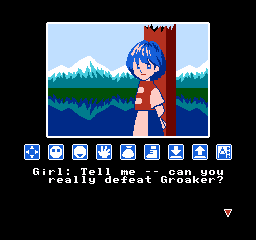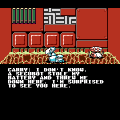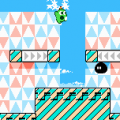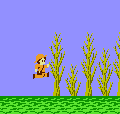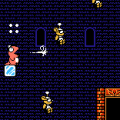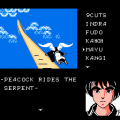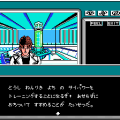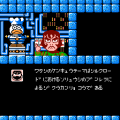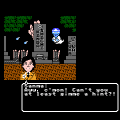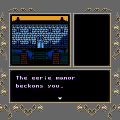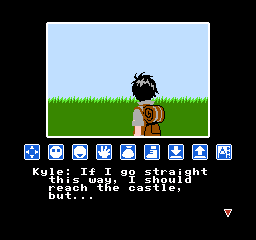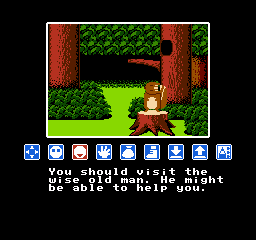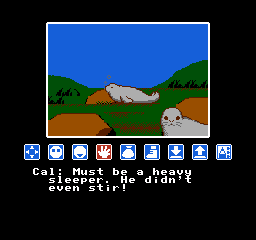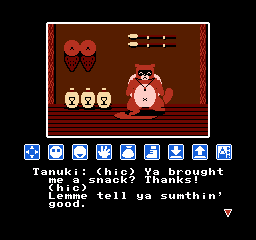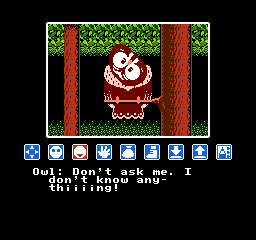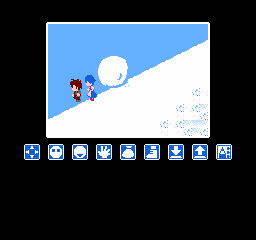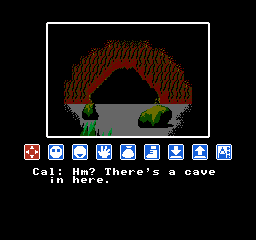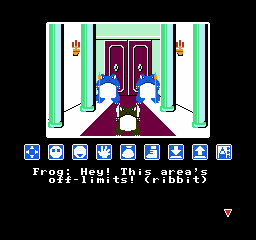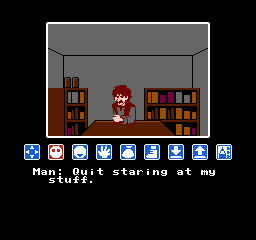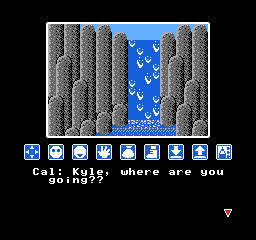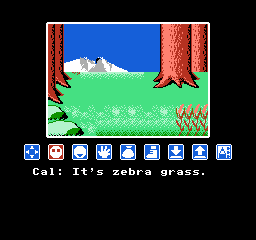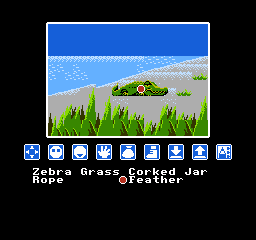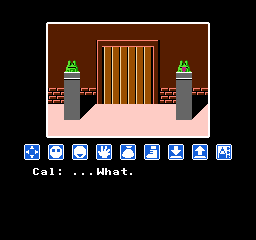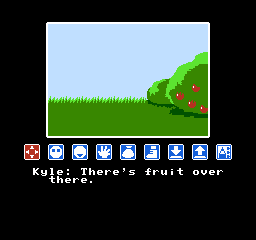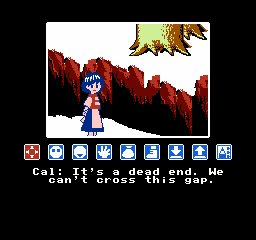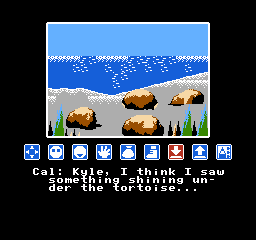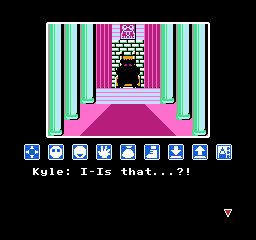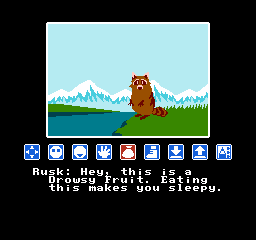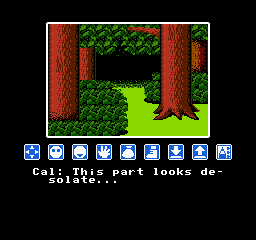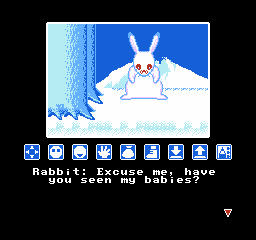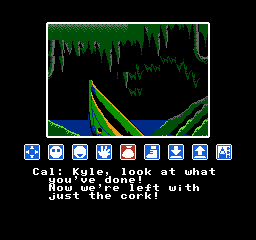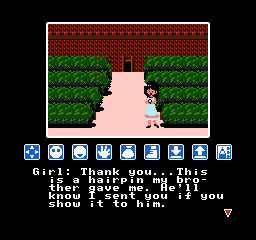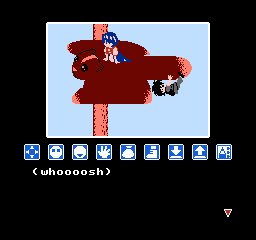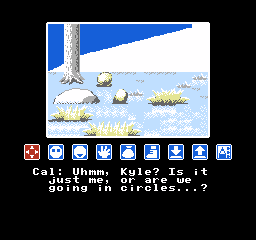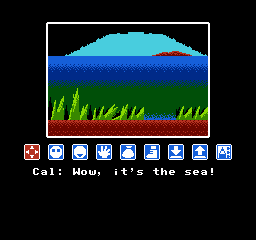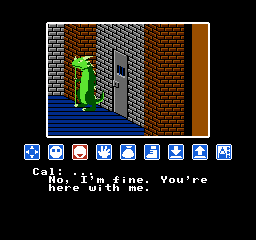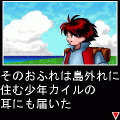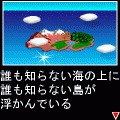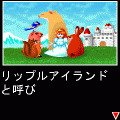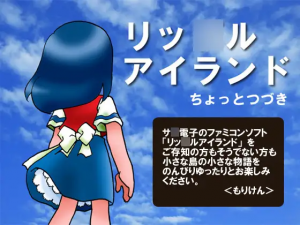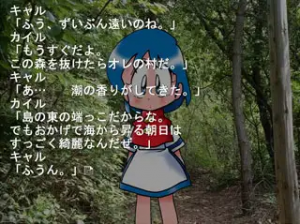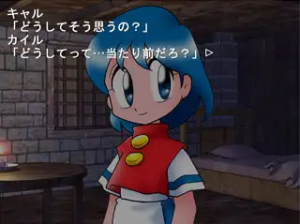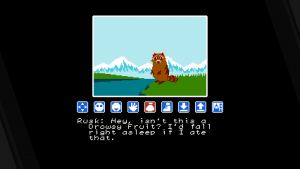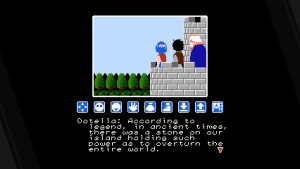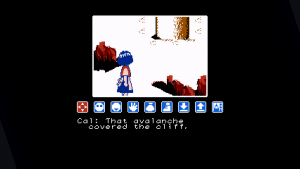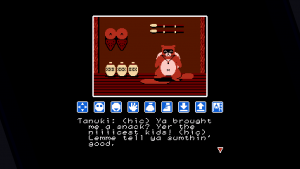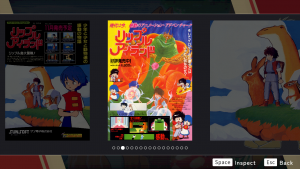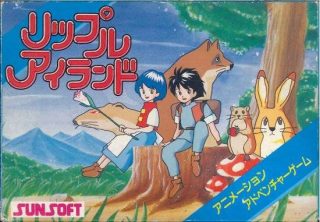
Famicom Cover
Before they became known for their classic action games like Blaster Master, Batman and Journey to Silius, Sunsoft made many Japan-exclusive games for the Famicom in various genres. One of these was Ripple Island (occasionally translated as Lipple Island), a straightforward adventure game with plenty of charm that’s worth checking out for fans of Japanese adventure games and especially newcomers.
The once-peaceful Ripple Island is under siege from the powerful Emperor Groaker, who uses his magic to ravage the land and kidnap the princess Nasarell. The king proclaims that whoever stops Groaker will receive great treasure and Nasarell’s hand in marriage. Hearing this, a young boy named Kyle heads out to do just that, and soon teams up with Cal, a girl who can talk to the animals. Along the way, they learn that they must collect two special orbs to fight back against Groaker’s magic.
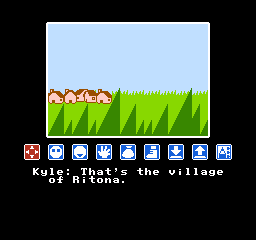
Ripple Island is an adventure game where you progress by solving puzzles, talking to people, and navigating the landscape. You interact with the world around you through a list of actions represented by icons. Most of these are intuitive enough, such as examining your inventory, interacting with objects, and looking at specific parts of the screen you’re currently in. But some serve multiple functions, such as the push icon also letting you knock on doors to see if you can go inside. It won’t always be immediately obvious what you’ll need to do on a given screen, so be sure to try each action if you’re stuck.
That said, the game does a good job at being accommodating towards the player. Your adventure is split into five areas, which you move between in linear order. You can’t revisit previous areas, and all items found in each area are used up before you move on. This allows you to focus solely on the immediate puzzles without getting overwhelmed by a large inventory or the need to backtrack.
Traversing can be a bit tricky at first, since you don’t have a map and are only presented with cardinal arrows showing where you can go. But each area takes up only 20-30 screens at the most which are arranged into clear sections, making them easier to mentally parse. You can also explore without fear of getting stuck in an unwinnable situation. While there is one section where you can screw up and receive a game over, you’re immediately brought back to the start of the area to give it another shot or go somewhere else.
This results in an adventure game that’s much more welcoming to people not used to this genre. The puzzles also play into that feeling, with most of them requiring simple solutions which don’t take great leaps in logic to figure out. However, you’re still expected to be observant and think things through. Taking notes of locations and what characters say will help you out. Once you’re doing that, Ripple Island will be easy enough, though not without some difficult sections.
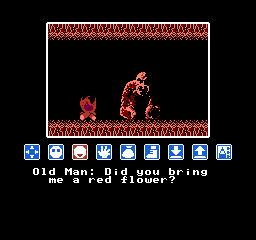
Area 2 is the most tedious part, having you wander through a winding wood and finding items, sometimes hidden in random bushes or the like, to give to characters. Area 3 provides the only game over scenario, and is the only area you can accidentally skip over if you don’t react quickly enough to a certain sequence. It’s the one time you’re forced to react in the moment, where failing to do so will put you on course to one of the game’s bad endings.
Yes, there are multiple endings, though most of them are based on making explicitly important choices or will only occur at the very end. These give a good reason to replay the game, to see how you can find the others and enjoy the cutscenes that come with them. You can also take note of the game’s 20-character passwords (thankfully using letters only) and use them to get back to certain areas at any time.
While the main focus is on solving puzzles, these are framed through quite the compelling adventure as Kyle and Cal travel across the island, helping people out and overcoming obstacles along the way. It’s a light-hearted romp with plenty of amusing moments, but it has a good handle on tone by allowing for more dramatic or mysterious scenes such as Cal’s introduction amidst a flooded village. This is backed up by the use of unique illustrations to make the important parts stand out.
In general, Ripple Island has very strong presentation. The graphics clearly display all the important points on a given screen, while using an attractive lineless artstyle to make its world and characters inviting. The soundtrack, handled by the renowned Naoki Kodaka (who worked on many of Sunsoft’s NES classics) and someone by the handle of “Ryu”, is a pleasantly composed soundscape that keeps with the game’s cheery adventurousness yet still creating tunes that complement and enhance the emotions of each section.
Perhaps the only damning thing about Ripple Island is that it’s too easy for those more used to complex adventure games, with its simple puzzles and linear progression. However, that also means it’s more accessible for the inexperienced players or folks looking for a breezy adventure. Thanks to an English fan translation by LIPEMCO! Translations released back in 2018, there’s no reason not to give this charming game a look.
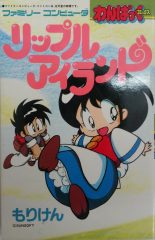
Ripple Island manga (tankoban cover)
A manga adaptation by Kenji Mori (Moriken), one of the game’s artists, was published in Tokuma Shoten’s Wanpakku Comics magazine in 1988. The manga seems to retell the events of the game, albeit in a more chibified style than the in-game artwork used. It was released as its own volume, along with a manga based on The Wing of Madoola, another Japan-only Sunsoft game that Moriken was involved in.
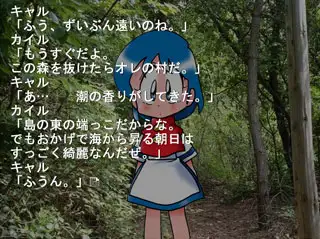
Ripple Island: A Brief Continuation
In 2009/2010, Moriken released a handful of doujin action and adventure games through his self-founded M’s Cafe circle, which featured characters from the Sunsoft games he worked on such as Madoola, Marchen Veil, and Ripple Island. The latter, titled “リップルアイランドちょっとつづき” (or something along the lines of “Ripple Island: A Brief Continuation”), is a sound novel which features Cal in some capacity. can be found along with Moriken’s other games.
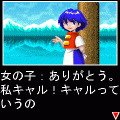
Ripple Island’s i-αppli mobile port
Ripple Island has been lucky enough to see re-releases a few times over the years. It was ported to the PlayStation as part of the Memorial Series: Sunsoft series of Famicom compilations, on the same volume as Chou Wakusei Senki Meta Fight / Blaster Master. A version with enhanced graphics was released for the i-αppli series of mobile phones in 2003, though it’s hard to find anything of it beyond a handful of screenshots.
It also got ported to the 3DS Virtual Console along with other Sunsoft classics, letting a new generation experience it on the go while the 3DS eShop was online. It was released on modern platforms in 2024 via the SUNSOFT is Back! Retro Game Selection, alongside The Wings of Madoola and Kanshaku tamanage Kantarou no Toukaidou Gojuusan-tsugi. This re-release includes a bonus gallery featuring promotional and concept art for each game, as well as brand new official English translations.
LINKS:
The English fan translation patch: https://www.romhacking.net/translations/3769/
A link to Moriken’s old website where he discusses Ripple Island, along with his other projects: http://web.archive.org/web/20150620013143/http://moriken.kalin.to/about/about.htm
A link to purchase Moriken’s Ripple Island: A Brief Continuation adventure game: https://www.dlsite.com/home/work/=/product_id/RJ055839.html
The other games Moriken made based on his Sunsoft work: https://www.dlsite.com/home/circle/profile/=/maker_id/RG10739.html/?locale=en_US
Special thanks to KAT_08_ on Twitter, through whom I found proof that the mobile port actually existed thanks to a (sadly dead) link and the four screenshots featured along with this article.
